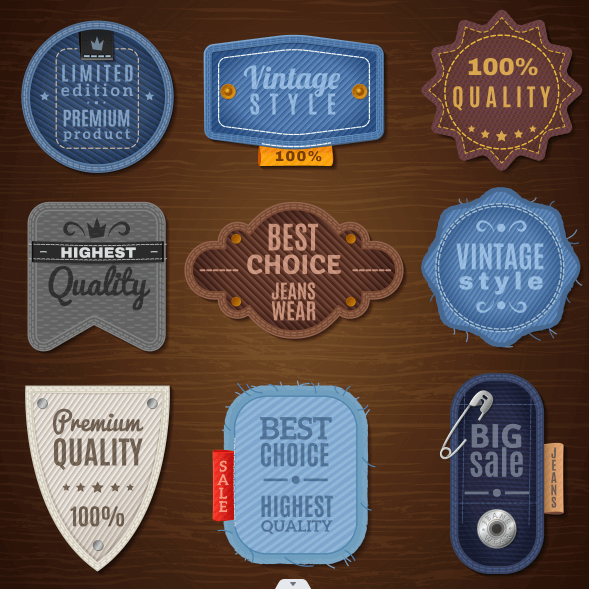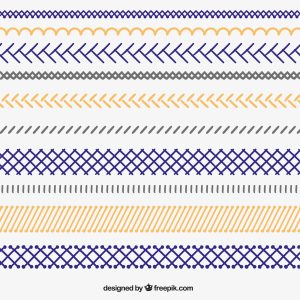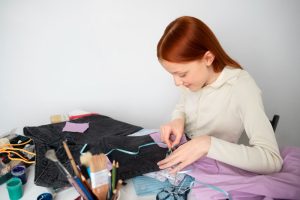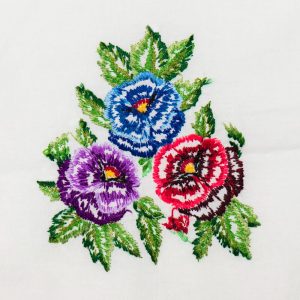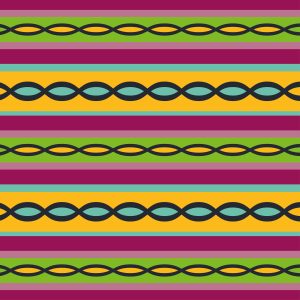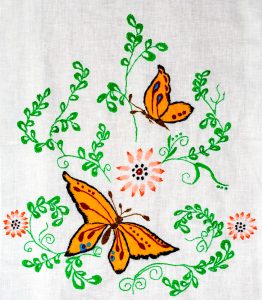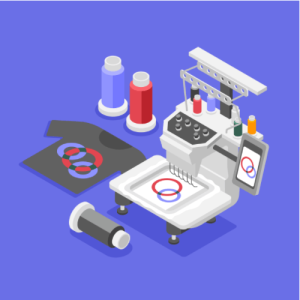Custom patches do more than just decorate clothing — they express identity, represent organizations, and strengthen brand visibility. Every custom patch needs the right backing to stay secure, maintain its shape, and last long.
At Quality Care Digitizing, we understand that the perfect backing gives your patch strength, flexibility, and a professional finish. Whether your patches are for uniforms, fashion apparel, or promotional use, the right backing ensures your design stands out and stays in place.
Learn About: Patch Services
How Do Custom Patch Backings Work?
A patch backing is the material or method used on the reverse side of the patch to attach it to a surface. It determines how the patch bonds to fabric or objects and affects its durability, removability, and purpose.
Let’s explore the most common types of patch backings and when to use each.
1. Sew-On Backing
How it works: The patch is stitched directly onto the fabric by hand or sewing machine.
Best for: Jackets, uniforms, and workwear.
Pros:
- Extremely durable
- Fully washable
- Suitable for detailed embroidery designs
Cons:
- Requires sewing tools and skills
- Time-consuming to apply
Quality Care Tip: Sew-on patches are ideal when you want a permanent, long-lasting attachment that can handle frequent washing or outdoor wear.
Learn About: Vector Art Services
2. Iron-On Backing
How it works: This backing has a heat-activated adhesive layer that bonds when pressed with an iron.
Best for: Cotton or polyester fabrics.
Pros:
- Easy and fast application
- No stitching needed
Cons:
- Not suitable for leather, nylon, or waterproof materials
- Adhesive may weaken after many washes
Quality Care Tip: Use a pressing cloth between your iron and patch to prevent burns or damage to the fabric.
3. Hook-and-Loop (Velcro) Backing
How it works: Consists of two parts — one attached to the garment (loop) and one on the patch (hook). They fasten together securely but can be separated easily.
Best for: Military uniforms, tactical vests, and replaceable branding patches.
Pros:
- Reusable and adjustable
- Ideal for patches that need frequent removal
Cons:
- Requires loop fabric for proper adhesion
- Can wear out if dirt builds up in the hook side
4. Peel-and-Stick Backing
How it works: Features a self-adhesive layer for quick, temporary attachment.
Best for: Promotional events, giveaways, or temporary displays.
Pros:
- Instant application
- No tools required
Cons:
- Not designed for long-term use
- Can lose stickiness in hot or humid conditions
5. Magnetic Backing
How it works: Contains a thin magnetic layer that sticks to metal surfaces.
Best for: Fridges, lockers, metal boards, or corporate gifts.
Pros:
- Damage-free application
- Fully reusable
Cons:
- Works only on metal surfaces
6. Button Loop Backing
How it works: Has a small loop that allows the patch to hang from a button or hook.
Best for: Decorative patches, children’s wear, or collectable designs.
Pros:
- Easy to attach and remove
- Requires no adhesives or sewing
Cons:
- Only compatible with garments that have buttons or loops
What to Consider When Choosing a Patch Backing
When selecting a backing, think about your patch’s purpose and where it will be used. Consider the following:
- Permanence: Will the patch be permanent or removable?
- Fabric type: Can the fabric handle heat or stitching?
- Durability: Will it face frequent washing or outdoor exposure?
- Flexibility: Do you need to change or reposition it often?
At Quality Care Digitizing, we help customers match the right backing type with their fabric and intended use.
Why the Right Backing Matters
The wrong backing can ruin even the best-designed patch. Poor adhesion, curling, or peeling can make patches look unprofessional. Choosing the right backing ensures:
- Firm attachment
- Extended life
- Proper alignment
- Functionality for the intended purpose
With Quality Care Digitizing, your patches not only look good but stay secure for as long as you need.
How to Care for Custom Patches
Taking care of your patches helps them last longer and retain their original appearance.
Washing Tips:
- For sew-on or iron-on patches, wash garments inside out.
- Avoid using high heat while drying.
- Remove Velcro patches before washing to preserve the grip.
Storage Tips:
- Keep adhesive patches in a dry, cool place.
- Avoid direct sunlight to prevent color fading.
- Learn About: Digitizing Services
Conclusion: Make Your Patch Stick—Literally and Figuratively
A patch’s strength and longevity depend on its backing. Whether you need a permanent attachment or something removable, choosing the right backing is key.
At Quality Care Digitizing, we provide expert guidance and top-quality patch production to match every purpose, garment type, and brand requirement.
Let’s Talk About Your Options
Want professional custom patches with perfect backing?
Get in touch with Quality Care Digitizing today to find the best solution for your project.
Frequently Asked Questions (FAQs) About Custom Patch Backings
1. What is the most durable patch backing?
Sew-on backing is the most durable option. Since it is stitched directly into the garment, it withstands frequent washing, rough handling, and outdoor conditions without losing its hold.
2. Can I iron a patch onto any fabric?
No. Iron-on patches work best on cotton and polyester materials. Avoid nylon, leather, or waterproof fabrics as heat can damage them or prevent the adhesive from bonding properly.
3. Which patch backing is best for reusable applications?
Hook-and-loop (Velcro) backing is ideal for reusable patches. It allows easy removal and reattachment, making it perfect for uniforms, military gear, and interchangeable branding.
4. How should I apply an iron-on patch correctly?
Place the patch in the desired position, cover it with a pressing cloth, and apply firm pressure with a hot iron for 20 to 30 seconds. Allow it to cool completely before handling or washing.
5. Are peel-and-stick patches long-lasting?
No. Peel-and-stick backings are made for temporary use, such as short events, trade shows, or promotional campaigns. Over time, the adhesive weakens, especially in humid or hot conditions.
6. Can I wash garments that have patches attached?
Yes, but handle them carefully. Sew-on and iron-on patches should be washed inside out on a gentle cycle. Velcro patches should be removed before washing to protect the hook-and-loop grip.
7. What is the best backing for metal surfaces?
Magnetic backings are best for metal surfaces such as lockers, refrigerators, and whiteboards. They are reusable, non-damaging, and great for display or marketing purposes.
8. How do I choose the right backing for my needs?
- For permanent use: choose sew-on or iron-on backings.
- For reusable use: choose Velcro or magnetic backings.
- For temporary use: choose peel-and-stick or button loop backings.
If unsure, consult Quality Care Digitizing for expert advice based on your fabric and intended purpose.
9. Can I mix backing types on one patch?
In most cases, yes. Some customers choose to combine Velcro and sew-on or magnet and adhesive options for dual functionality. Our team at Quality Care Digitizing can help customize your patch setup.
10. How long does each backing type last?
Sew-on patches can last as long as the garment itself. Iron-on patches last several washes with proper care. Velcro backings last years if cleaned regularly, while adhesive and magnetic types work best for short-term or occasional use.

